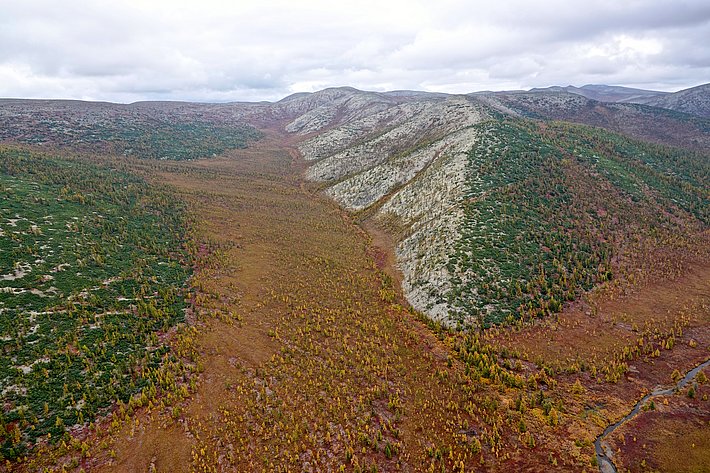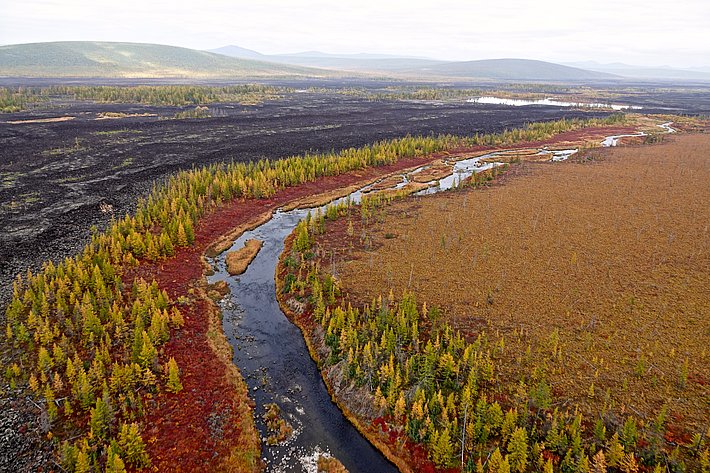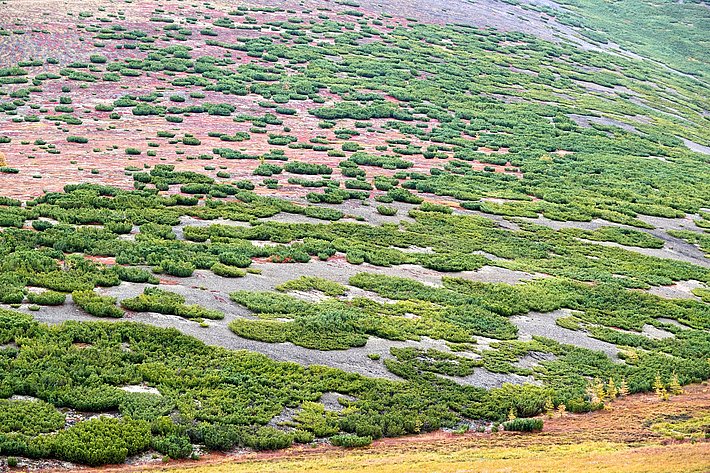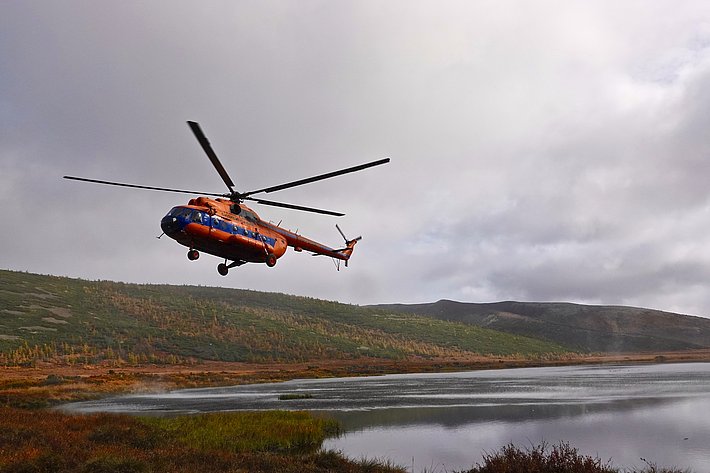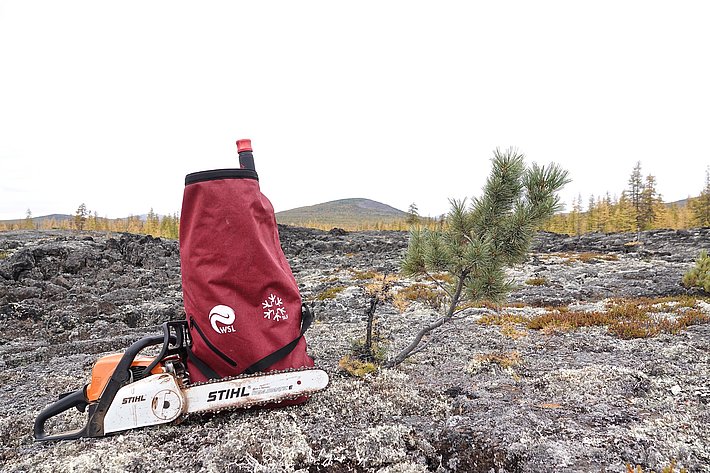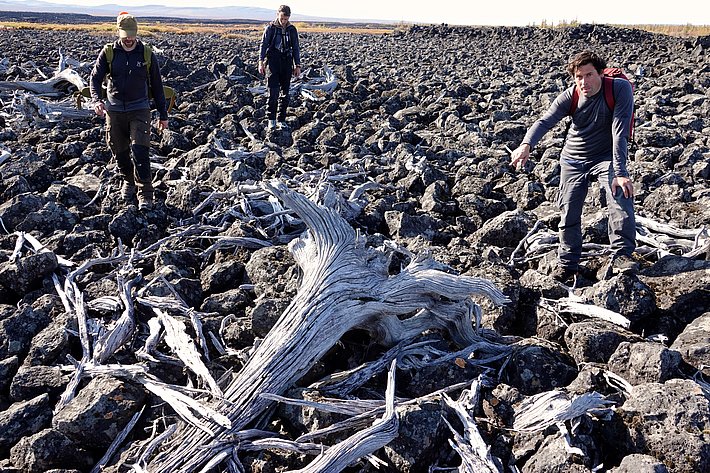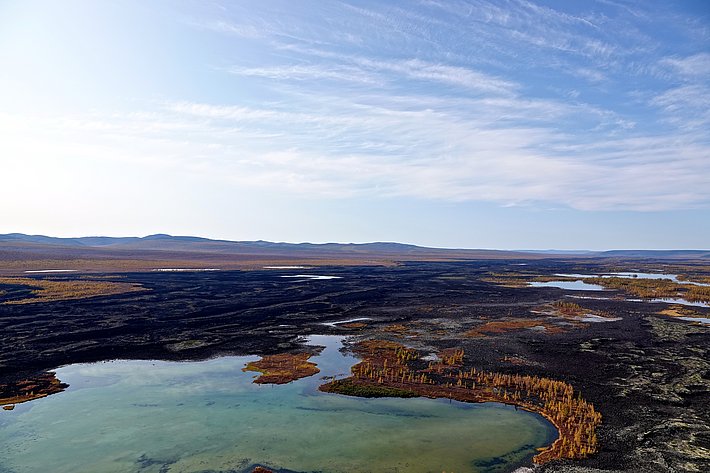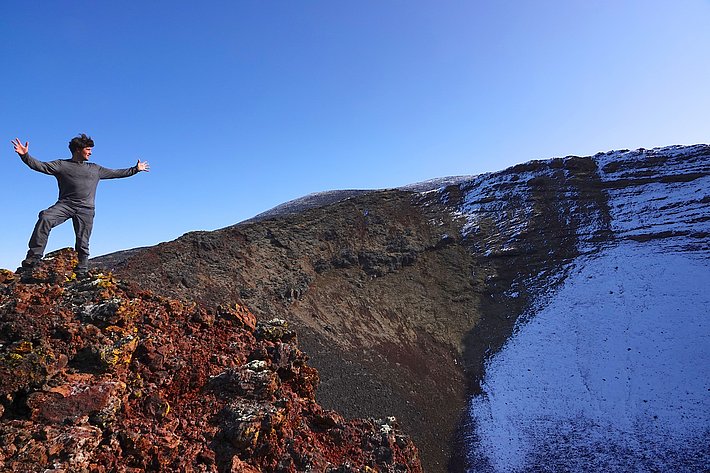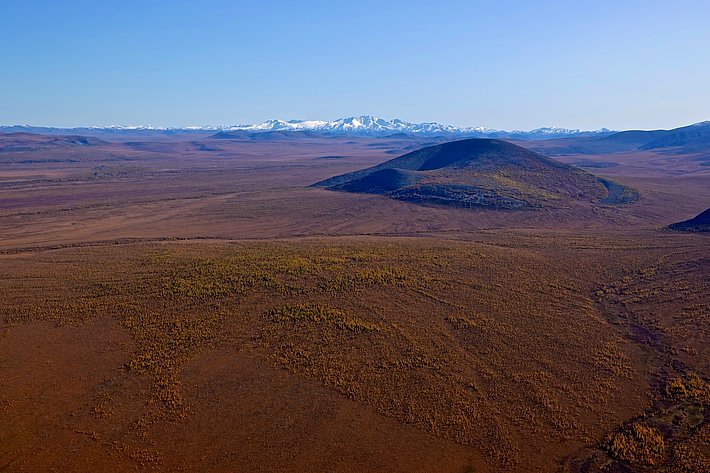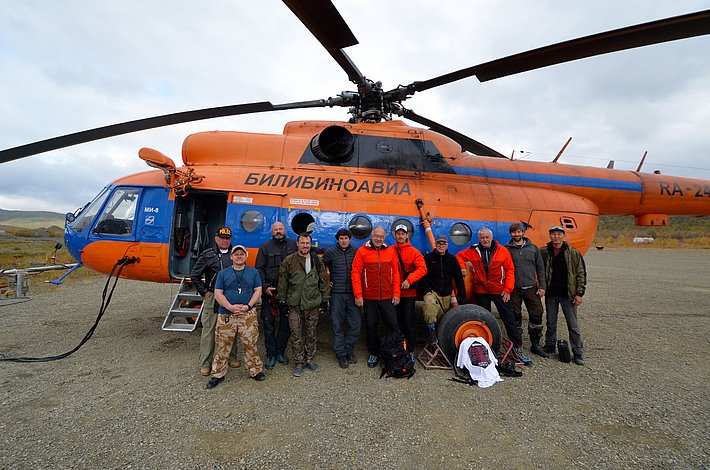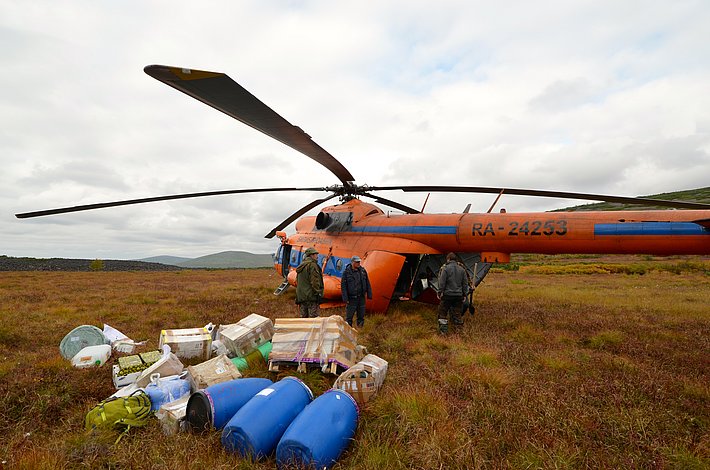Anyui - Volcanoes, Climate and the Peopling of the Americas
Ulf Büntgen
Deputy2019 - 2028
A pilot study in the summer of 2019 ¶
We performed ambitious fieldwork on and documentation of the little-known Anyui volcano (Fig. 1) in northeast Siberia with the long-term aim of reconstructing its eruption activity and to investigate possible effects on climate variation, mammoth extinction and human migration at the crossroads between Eurasia and the Americas. Our transdisciplinary journey to the epistemology of climate variability and human history is expected to generate novel scientific insights and footage for unconventional aesthetic filmmaking.
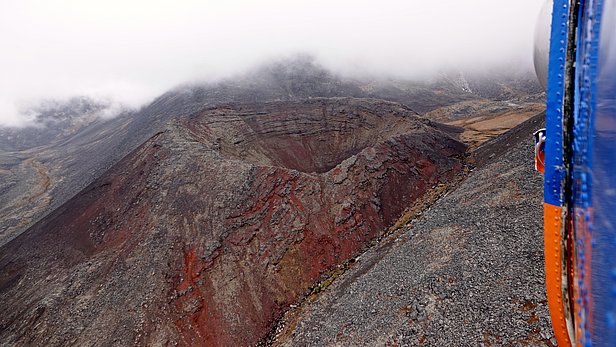
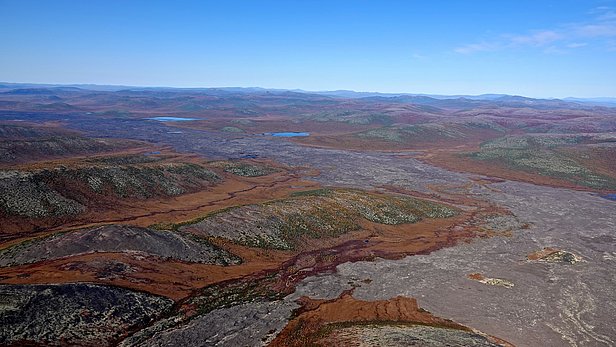
Background ¶
Climate change has played a fundamental role in human history, and volcanic eruptions represent the main natural forcing of climate. Numerous eruptions of the past have impacted pastoral environments and agricultural systems to the extent that they have triggered major societal transformations1. Before the era of meteorological measurements, our best records of climate variability, dating back thousands of years are derived from tree rings2. Thanks to their annual dating, tree-ring chronologies are also yielding, for the first time, accurate dates of some major medieval volcanic eruptions3,4.
One region of the Earth where tree-ring evidence is critically missing is northeast Siberia. Roughly between 28,000 and 18,000 years ago, at the height of the last Ice Age, when sea-level was lower than today, northeast Siberia and northwest North America was ice-free and connected by a land bridge. This corridor between Chukotka and Alaska, called “Beringia” (Fig. 2), may have served as a biological refuge5,6, from which plants, animals and humans most likely colonized the Americas7,8. Climate and environmental change in Beringia is also central to understanding the extinction of the woolly mammoth and other megafaunas9,10.
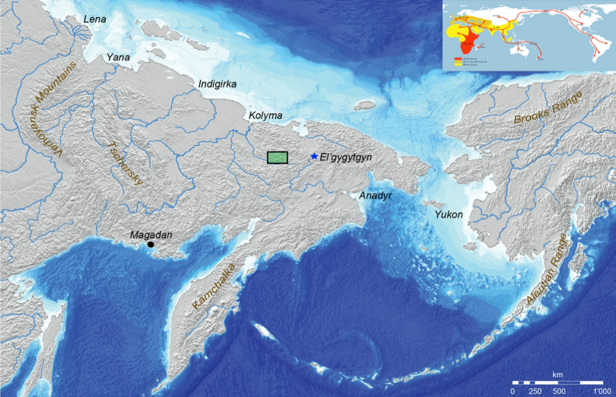
Motivation ¶
Despite its remarkable 56 km-long lava flow, Anyui volcano was only discovered in aerial photographs in 1952. Indeed, due to challenging logistics, much of Chukotka remains terra incognita to science11. Superficially, Anyui’s last eruption appears very recent, though estimates of its age are contradictory12,13. Moreover, no ash from the volcano has been found in the sediments of Lake El’gygytgyn14 nor in Greenland ice cores15.
We believe Anyui holds an exceptionally rich and well-preserved archive of recent and relict trees, including those killed by the last eruption, that can reveal the first detailed record of past climatic variation for this extremely remote region, potentially stretching back more than 10,000 years. We also speculate that the eruption was witnessed by human populations and that there may be archaeological and faunal remains, both from before and after the eruption
Scientific motivation:
- What is the eruptive history of Anyui volcano, and why does volcanism occur in this region, far from the tectonic plate boundary?
- How did Anyui’s eruptions affect local to larger-scale ecology, hydrology, climate and human populations?
- What can Beringia’s environmental history tell us about megafaunal extinction and the colonisation of America?
Artistic motivation:
- What can an artist’s approach contribute to the methodologies in the field?
- How will the transdisciplinary field trip influence the artists methodology and artistic production?
- How does the transdisciplinary character of the field trip push the boundaries of epistemic and aesthetic outcomes?
Scientific Approach ¶
In late August and early September 2019, we undertook the first interdisciplinary and international pilot mission to Anyui volcano, where we sampled living and dead larch trees (Fig. 3; Larix cajanderi Mayr) using increment corers and chain saws. During our pilot expedition, we used helicopter support (based out of the settlement of Kiperveem about 60 km distant) to reach the volcano and to relocate between temporary field camps on the lava flow field along a roughly 1000 m elevation gradient (Fig. 4).
Subsequent laboratory analyses of tree-ring width, wood density and chemistry at annual resolution are still ongoing. Their outcome is expected to provide rich insights into past summer temperature variability at the world’s most eastern (northern/upper) treeline. Although it is possible that ring widths together with high-resolution radiocarbon (14C) measurements will yield precise dates of Anyui’s most recent eruptions, we also collected a suite of rock samples for radiometric dating.
The petrology and geochemistry of these rocks will further be investigated to improve understanding of the enigmatic origins of volcanism in this region. Through integration of paleoenvironmental and geological research, we are planning to elucidate Anyui’s eruption history and its impacts on ecology and human populations.
Our pilot expedition and first analytical work steps involve close collaboration with Russian colleagues from universities and institutes in Krasnoyarsk, Magadan, Moscow and Yakutsk. Moreover, this pilot project draws on expertise in archaeology, biology, climatology, ecology, ethnology, history, limnology and volcanology. Our new discoveries concerning volcanic activity, climate variability and human history, that is exclusive to northeastern Siberia, will – at a later stage – be published in leading international scientific journals.
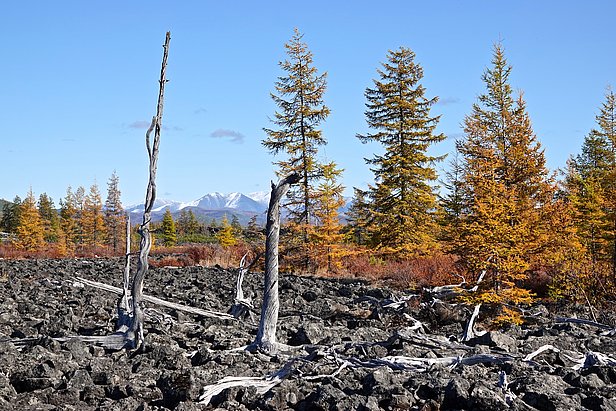
Artistic Approach ¶
We are in the process of building an ambitious collaboration at the nexus between natural sciences, arts and humanities, and more specifically between nature and visual culture resulting in a documentary film. Inspired by the work of Werner Herzog (e.g. Happy people and Into the Inferno), footage will cover all aspects of the expedition.
With high-end production values, our film project will tell the story of Beringia and the fascinating relationships between people and environment at a critical moment in the human colonisation of the New World. The film’s narrative will weave in the culture and economy of indigenous peoples living in the area today, and will resonate with the issues of socio-political transformation, past, present, future.
Further public engagement and outreach, both in the Western Hemisphere and Russia, will be achieved through Claudia Comte, an artist in residence, who will join currently proposed future expeditions to capture a multitude of ethnological and environmental aspects of the project.
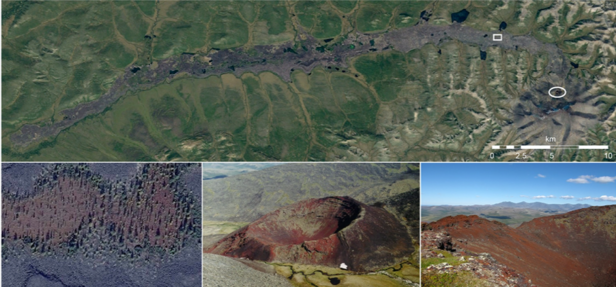
Political Implications ¶
Our scientific findings and documentary filmmaking will inspire a wider public fascinated by human and climate history, and increasingly concerned with future environmental change. The project is particularly timely in the context of the global climate change debate, because of the limited paleoenvironmental constraints for northeastern Siberia16,17, and in a phase when diplomatic channels between the West Hemisphere and Russia are narrowing18.
Impressions ¶
Some impressions from the pilot study in 2019
Field Team ¶
The 2019 pilot expedition included paleoclimatologists, forest ecologists and volcanologists from England (Cambridge), Russia (Krasnoyarsk, Yakutsk and Magadan) and Switzerland (Birmensdorf).
The scientific part of the expedition was under the lead of Professor Ulf Büntgen (Environmental Systems Analysis) from the Department of Geography, University of Cambridge, UK, supported by Professor Andreas Rigling from the Research Unit Forest Dynamics, Swiss Federal Institute for Forest, Snow and Landscape Research WSL, Switzerland and the Swiss experts Men Haupt, Cyrille Haupt and Heinz Zurfluh.
Dr. Alexander Kirdyanov (Cambridge and Krasnoyarsk), together with colleagues from Yakutsk and Magadan, organised and coordinated all logistics and administrative issues at local, national and international levels. In addition to its various scientific foci, the pilot expedition dedicated substantial capacity into the filmmaking and documentation of both the scientists and their work, as well as the indigenous people and their culture, superimposed on all aspects of Beringia’s natural, societal, political and historical landscape.
Expedition Details ¶
The pilot expedition (including international transfers), took place from mid-August to early-September 2019 (18.08. to 08.09.). International partners arrived in Moscow and took domestic flights to Magadan, and then on to Kiperveem (67°50’30.80’’N, 166°08’38.21’’E), where a local logistical team was already in place. Overland travel to the volcano would be prolonged and its success uncertain due to the swampy terrain and major river crossings required and thus helicopter support is essential to efficient fieldwork. Both a large transportation helicopter and a smaller Eurocopter were available for hire in Kiiperveem, from which we reached the volcano in about one-hour flight time.
Our first field camp was located close to the volcano vent (67°11’46.14’’N, 165°53’04.69’’E and 570 m asl). We used further helicopter support to transfer to successive field camps along the 56 km-long lava flow field. We ranged up to several kilometres from each camp on foot to conduct the dendrochronological and geological sampling. We collected many core and disc samples from recent and relict conifers, and plenty of rock and sediment samples.
All material was air-freighted either to the UK (Cambridge), Switzerland (Birmensdorf) or the Czech Republic (Brno) for subsequent laboratory work. International visas, sampling, film and interview permits, as well as export licences were organized by the North-Eastern Federal University, Belinskogo 58, Yakutsk, 677000, Russia.
Finally, we carried out an environmental impact assessment of our fieldwork; all field camps were thoroughly cleared up. At any time, field safety was of paramount importance given the remote field site and a full risk assessment was undertaken prior to travel.
Future Action ¶
Given both the scientific success of our 2019 pilot study and its financial, logistical and methodological constrains, we are now in the process of network building and proposal writing, in tandem with intensive national and international fundraising campaigns. Due to the project’s interdisciplinary nature, we are confident that future expeditions will generate exciting new insights of wide academic and societal relevance.
Key References ¶
(Project partners are in boldface)
1Oppenheimer C (2011) Eruptions That Shook the World. Cambridge University Press.
2BüntgenU et al. (2016) Cooling and societal change during the Late Antique Little Ice Age from 536 to around 660 AD. Nature Geosci 9: 231-236.
3Büntgen U et al. (2017) Multi-proxy dating of Iceland’s major pre-settlement Katla eruption to 822-823 CE. Geology 45: 783-786.
4Oppenheimer C et al. (2017) Multi-proxy dating the ‘Millennium Eruption’ of Changbaishan to late 946 CE. Quat Sci Rev 158: 164-171.
5Hoffecker J et al. (2014) Out of Beringia? Science 343: 979-978.
6Hoffecker J et al. (2016) Beringia and the Global Dispersal of Modern Humans. Evol Anthropol 25: 64-78.
7Pedersen MW et al. (2016) Postglacial viability and colonization in North America’s ice-free corridor. Nature 537: 45-49.
8Watson T (2017) Is theory about peopling of the Americas a bridge too far? PNAS 114: 5554-5557.
9MacDonald GM et al. (2014) Pattern of extinction of the woolly mammoth in Beringia. Nature Com 3: 893.
10Graham RW et al. (2016) Timing and causes of mid-Holocene mammoth extinction on St. Paul Island, Alaska. PNAS 113: 9310-9314.
11Dikov NN (2003) Archaeological Sites of Kamchatka, Chukotka, and the Upper Kolyma. University of Oregon, US.
12Lenova VV et al. (2015) New Localities of Cenozoic Alkali Basalts with Mantle Xenoliths in Northern Okhotsk Region (Seimkan Field). Russian J Pacific Geology 9: 287-300.
13Pevzner NM et al. (2017) Anyui Volcano in Chukotka: Age, Structure, Pecularities of Rocks’ Composition and Eruptions. Lithology Mineral Resources 52: 20-50.
14Melles M et al. (2012) 2.8 Million Years of Arctic Climate Change from Lake El’gygytgyn, NE Russia. Science 337: 315-320.
15Cook E et al. (2018) First identification of cryptotephra from the Kamchatka Peninsula in a Greenland ice core: Implications of a widespread marker deposit that links Greenland to the Pacific northwest. Quat Sci Rev 181: 200-206.
16Büntgen U et al. (2014) Cruising an archive: on the palaeoclimatic value of the Lena Delta. The Holocene 24: 627-630.
17Meyer H et al. (2015) Long-term winter warming trend in the Siberian Arctic during the mid- to late Holocene. Nature Geosci 8: 122-125.
18Büntgen U (2016) Bridge over troubled water – valuing Russia’s scientific landscape. Clim Res 70: 95-98.
